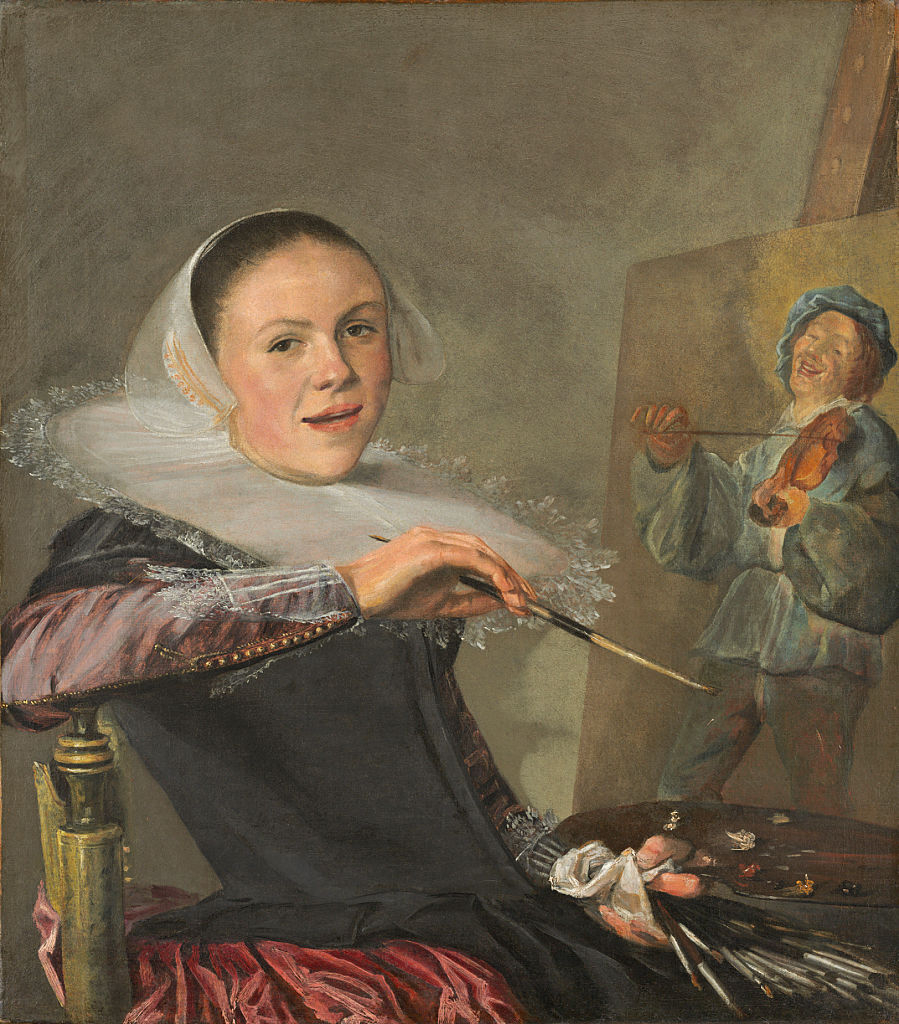
Over the past three years, the once-forgotten Dutch master Judith Leyster has appeared in a Google doodle, smashed estimates at auction, and debuted in the Rijksmuseum’s most prestigious chamber. Leyster was most active from in the early 1630s, before she married the inferior artist Jan Miense Moleanaer. Art history didn’t rediscover Leyster until an 1892 lawsuit between an art dealer and his vendor exposed that scores of her work that had been incorrectly attributed to her peer, potential teacher, and rumored rival, the great Dutch painter Frans Hals.
Since the 1970s, feminist scholars have reasserted her role in the canon, and the wider art world has slowly taken note. Frima Fox Hofrichter published the first monograph exploring Leyster’s work in 1989, adding depth to the artist’s origin story. She was born in Haarlem (a hub among the Netherlands’ thriving art economy) to a brewer whose business failed while she was growing up, hence her decision to adopt a craft. Hals was based there, as was poet Samuel Ampzing, whose writings suggest Leyster worked in Pieter de Grebber’s studio around 1628. Based on her style, historians have also suggested that she learned from Hals too. In her lifestime, she was celebrated, and in 1633 she became one of the only female painters admitted to the esteemed St. Luke’s Guild of Painters. She portrayed the period’s favored genre scenes with loose, luminous brushwork that lent psychological richness. She also perfected scenes lit by candlelight, and was considered so adept with worm’s eye view that peers called her “master of the upward glance.”
Judith Leyster, Jolly Toper (1629). Collection of the Rijksmuseum.
By 1634, Leyster had a studio with several students. Records state that she successfully sued Hasl for poaching one—which violated guild rules and robbed her of tuition fees. Much has been said, and very little proven, about the nature of her relationship with Hals, though they undoubtedly operated competing enterprises. In any case, Leyster got married two years later. She had five children and managed her husband’s art sales, while her own works became are small, simple, and mainly floral. The surviving works of Leyster’s prime either went unrecorded or were wrongly attributed to Moleanaer after her death in 1660. Some were even forged with Hals’s interlocking initials, despite extant records of her career.
Frans Hals, A Portrait of a Woman Holding a Pair of Gloves (1637). Courtesy of Johnny Van Haeften Old Master Paintings, London.
The most famous example of this forgery was in 1892, when British art dealer Thomas Lawrie bought a painting that had been attributed to Frans Hals, titled Carousing Couple (1630). It depicts a rosy-cheeked couple merrily playing music and drinking in a tavern. However, after cleaning the work, he found the enigmatic signature of another artist beneath one figure’s foot, where an L stuck out of an ornate J, just below a shooting star (a symbol known to be Leyster’s calling card). Lawrie sued the seller and gained a partial refund.
That court case generated a lot of buzz. It even reached Dutch art collector and historian Cornelis Hofstede de Groot, who put the dispute to rest when he identified the insignia as Leyster’s. The updated attribution knocked 25 per cent off the original sale price of 4,500 pounds, the court ruled. Thus the plaintiff won, and de Groot identified seven more paintings that had been misattributed to Hals. In 1926, another 35 paintings were identified as works by Leyster and if more recent history is any indication, there’s likely future discoveries in store.
What’s the deal with Leonardo’s harpsichord-viola? Why were Impressionists obsessed with the color purple? Art Bites brings you a surprising fact, lesser-known anecdote, or curious event from art history. These delightful nuggets shed light on the lives of famed artists and decode their practices, while adding new layers of intrigue to celebrated masterpieces.